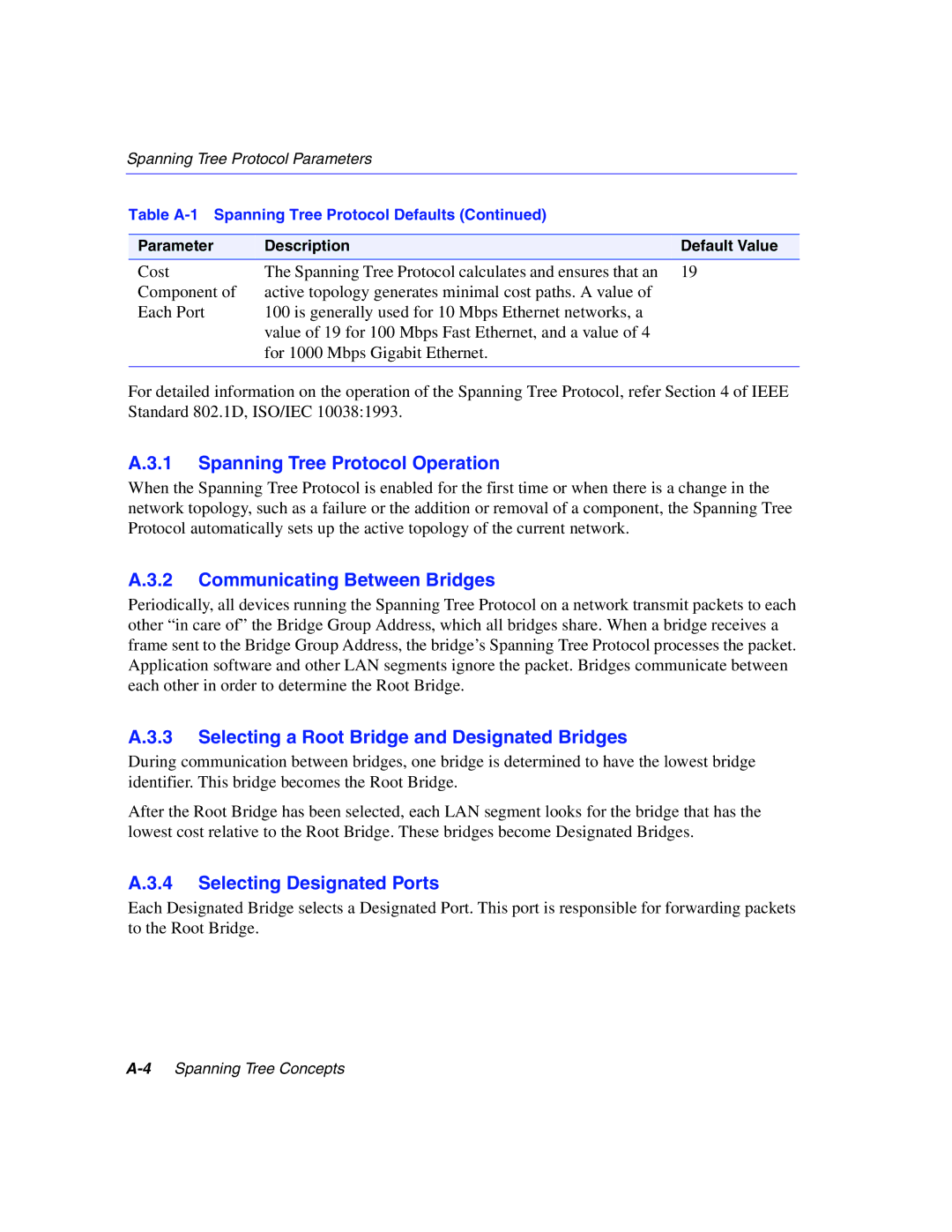Spanning Tree Protocol Parameters
Table
Parameter | Description | Default Value |
Cost | The Spanning Tree Protocol calculates and ensures that an | 19 |
Component of | active topology generates minimal cost paths. A value of |
|
Each Port | 100 is generally used for 10 Mbps Ethernet networks, a |
|
| value of 19 for 100 Mbps Fast Ethernet, and a value of 4 |
|
| for 1000 Mbps Gigabit Ethernet. |
|
|
|
|
For detailed information on the operation of the Spanning Tree Protocol, refer Section 4 of IEEE Standard 802.1D, ISO/IEC 10038:1993.
A.3.1 Spanning Tree Protocol Operation
When the Spanning Tree Protocol is enabled for the first time or when there is a change in the network topology, such as a failure or the addition or removal of a component, the Spanning Tree Protocol automatically sets up the active topology of the current network.
A.3.2 Communicating Between Bridges
Periodically, all devices running the Spanning Tree Protocol on a network transmit packets to each other “in care of” the Bridge Group Address, which all bridges share. When a bridge receives a frame sent to the Bridge Group Address, the bridge’s Spanning Tree Protocol processes the packet. Application software and other LAN segments ignore the packet. Bridges communicate between each other in order to determine the Root Bridge.
A.3.3 Selecting a Root Bridge and Designated Bridges
During communication between bridges, one bridge is determined to have the lowest bridge identifier. This bridge becomes the Root Bridge.
After the Root Bridge has been selected, each LAN segment looks for the bridge that has the lowest cost relative to the Root Bridge. These bridges become Designated Bridges.
A.3.4 Selecting Designated Ports
Each Designated Bridge selects a Designated Port. This port is responsible for forwarding packets to the Root Bridge.
